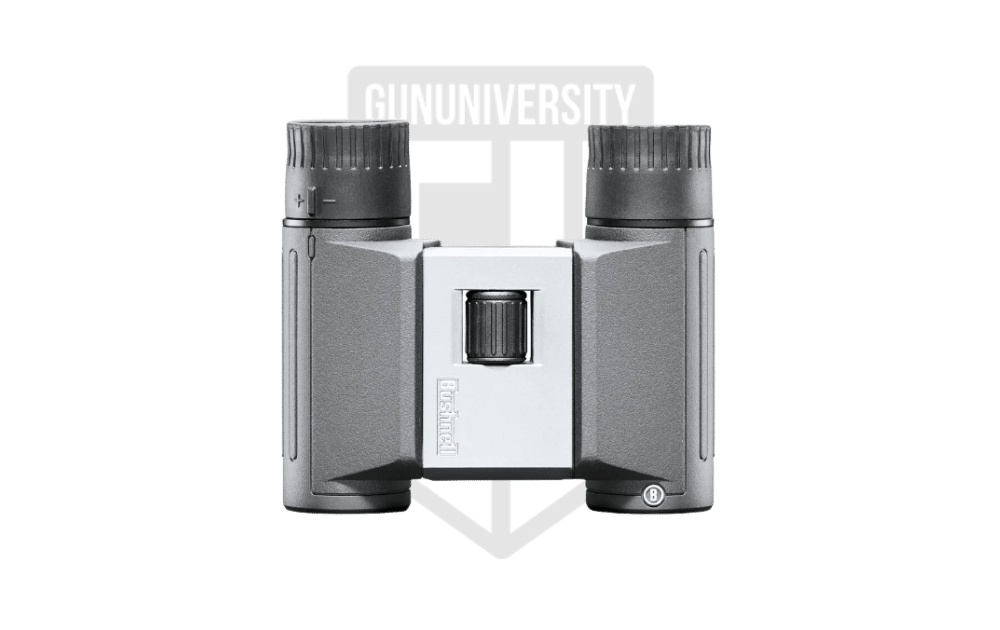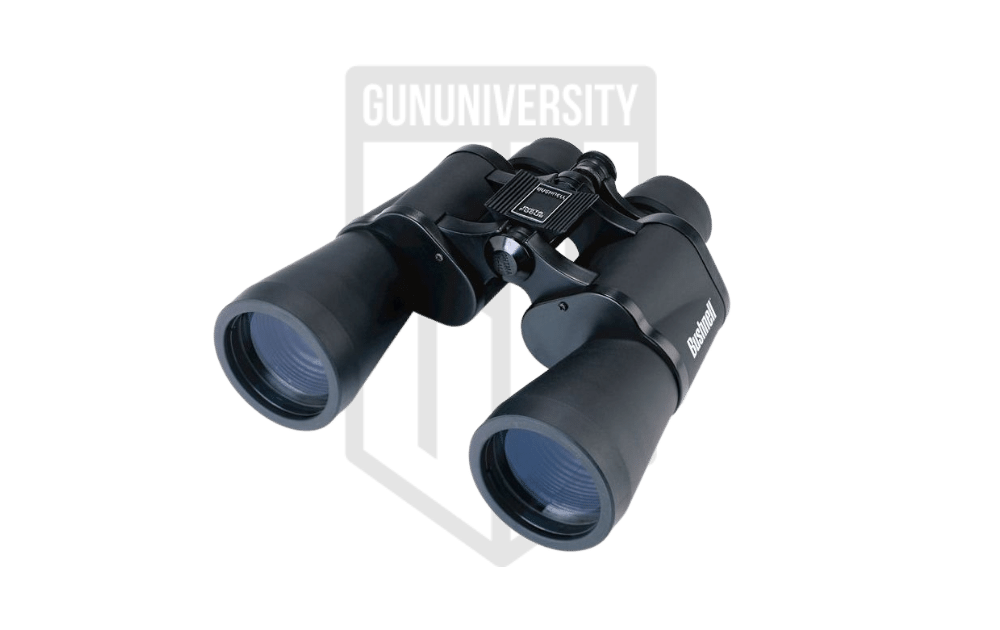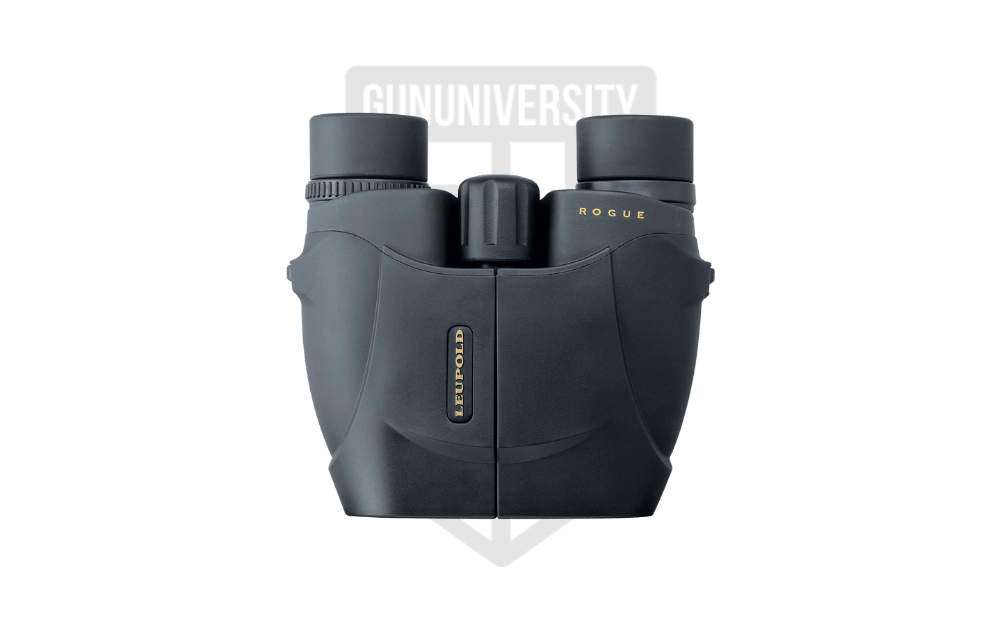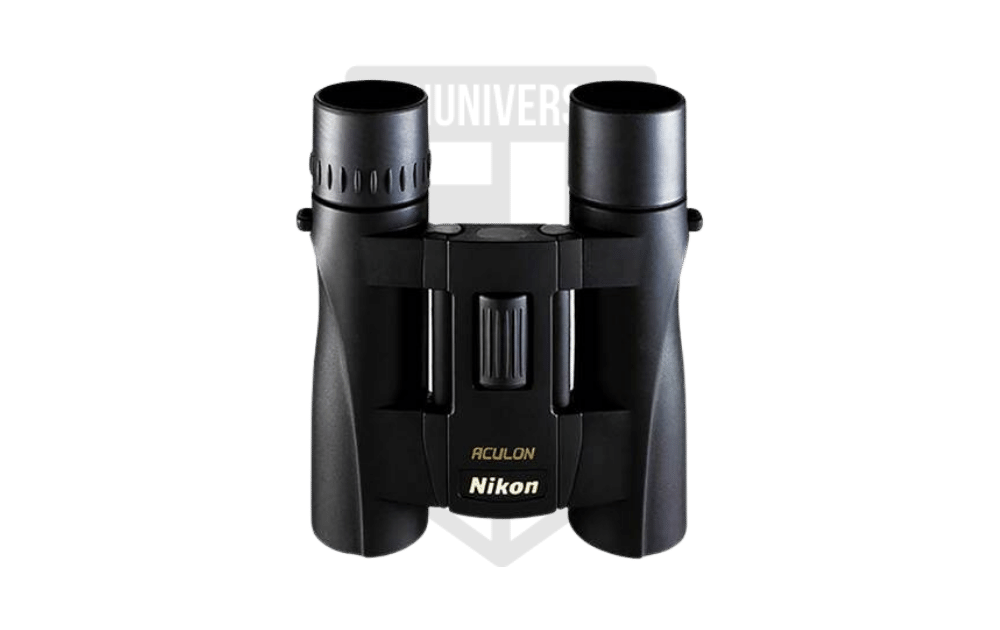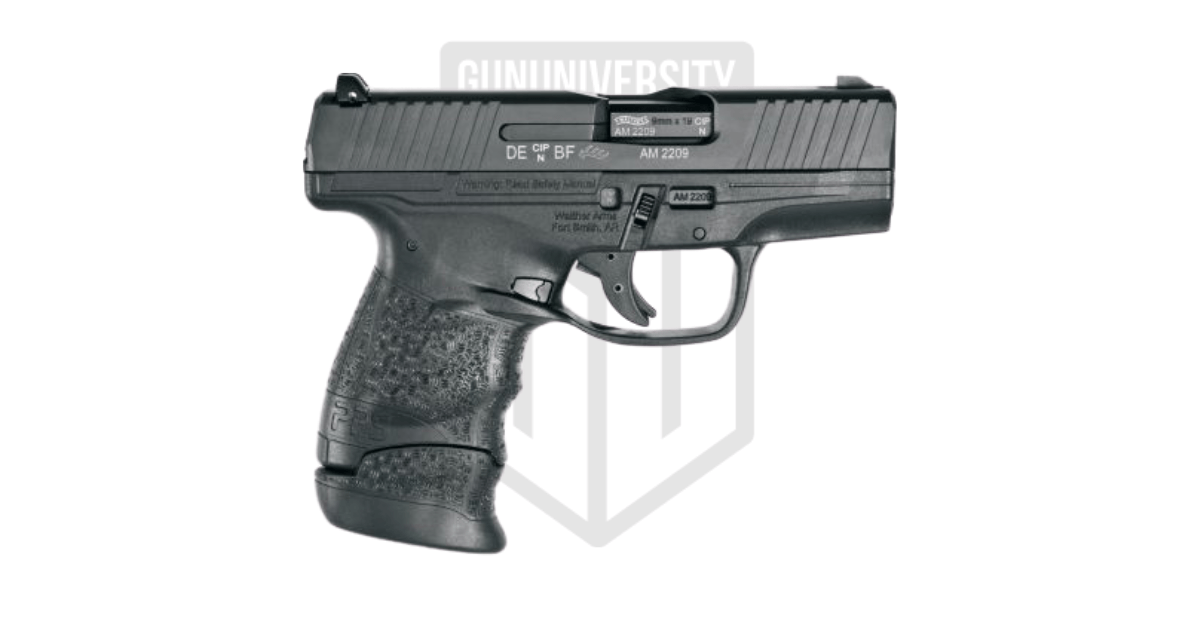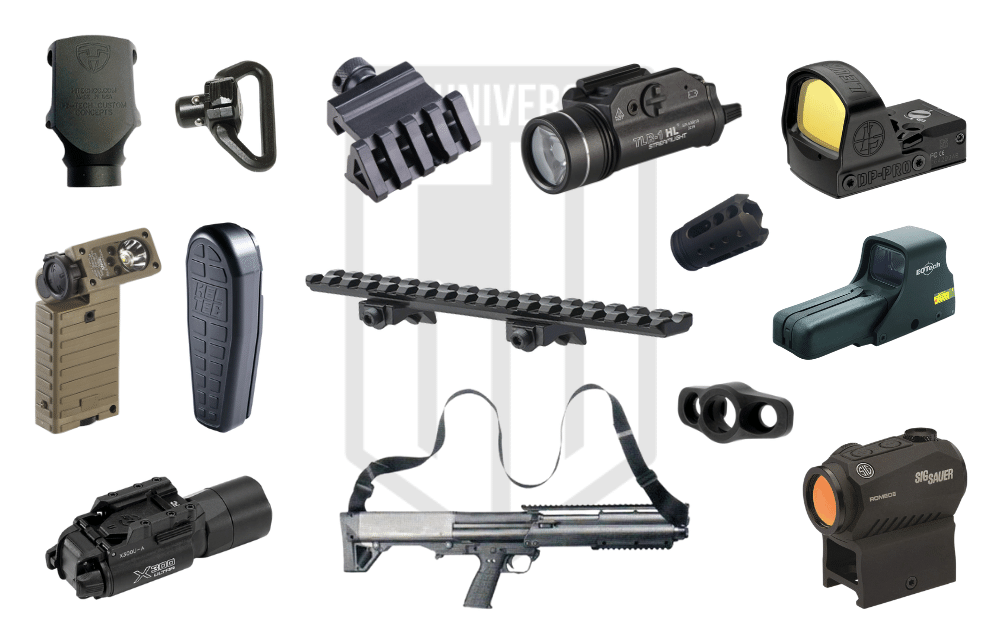6 Best Binoculars Under $100: Budget Friendly Options
While most of us live and die by the phrase “buy once, cry once” sometimes you just need something cheap that will get the job done.
Be it because you’ve bought once and cried once too hard on the rest of your gear or be it because you just don’t want to invest rent money into this year’s hunt, here are the best binoculars under $100!
Best Binoculars Under $100
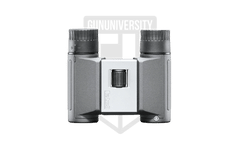 |
| Check Price | |
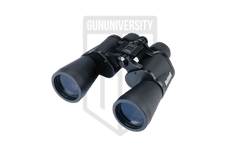 |
| Check Price | |
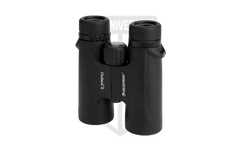 |
| Check Price | |
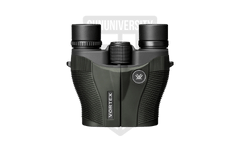 |
| Check Price | |
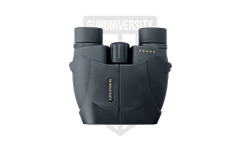 |
| Check Price | |
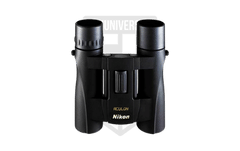 |
| Check Price |
Best Binoculars Under $100
- Bushnell Powerview 2 8x21mm
- Bushnell Falcon 10x50mm
- Celestron Outland X 10x42mm
- Vortex Vanquish 10x26mm
- Leupold BX-1 Rogue 10x25mm
- Nikon Aculon A30 10x25mm
Best Binoculars Under $100 Specifications
Below is a list of our Best Binoculars Under $100. So we can compare and line up the specs from each of the products and help you make the best decision possible.
| Binocular | Magnification/Obj. Lens: | Exit Pupil | Twilight Factor | Weight | Prism Type | Close Focus |
|---|---|---|---|---|---|---|
| Bushnell Powerview 2 8x21mm | 8x21mm | 2.6mm | 13 | 7.2 oz | Roof | 21 Feet |
| Bushnell Falcon 10x50mm | 10x50mm | 5mm | 22.4 | 27 oz | Porro | 25 Feet |
| Celestron Outland X 10x42mm | 10x42mm | 4.2mm | 20.5 | 22 oz | Porro BaK-4 | 13 Feet |
| Vortex Vanquish 10x26mm | 10x26mm | 2.6mm | 16.1 | 12.7 oz | Porro | 7 Feet |
| Leupold BX-1 Rogue 10x25mm | 10x25mm | 2.4mm | 15.8 | 12 oz | Porro BaK-4 | 14 Feet |
| Nikon Aculon A30 10x25mm | 10x25mm | 2.5mm | 15.8 | 7 oz | Roof BaK-4 | 8 Feet |
Best Binoculars Under $100 Reviews
Now that we’ve run through the overview and looked at our list, let’s take the time to individually review each item. In this section we’ll be revisiting our specs, speaking about the product, and looking at the pros and cons.
1. Bushnell Powerview 2 8x21mm
Bushnell Powerview 2 8x21mm
A tiny set of binos that are perfect for hiking or eyeballing terrane. Great for keeping with at all times and cheap enough that you won’t feel it if you lose it.
- Durability A
- Glass Clarity B+
- Features C
- Ergonomics B+
- Value A+
Our Grade
B+
Reader’s Grade
B
Based on 1 Reviews
Your Grade
Do You Own This ? Leave A Review
Success Your Grade Has Been
Added To Our Reader’s Score
We use email to verify the accuracy of our reviews. We promise to never spam you.
Bushnell Powerview 2 Specs
- Magnification/Obj. Lens 8x21mm
- Exit Pupil 2.6mm
- Twilight Factor 13.0
- Weight 7.2 oz
- Prism Type Roof
- Close Focus 21 Feet
Bushnell Powerview 2 Review
I’ve been racking my brain and I honestly can’t remember how I ended up with these binos. Maybe I bought them, maybe I was given them, who can say. All I know is that I’ve kept them in my EDC bag for well over two years and I’ve come to love them.
I’m not much of a bird watcher, but I do like to have binos with me to look at interesting things or take a moment and work on my range estimation. For those easy kinds of goals, these are a perfect set of binos.
They’re cheap, easy to work with, clear enough to be useful, and honestly not something I would be upset about losing or breaking if I happened to do that.
Mine is the old version and has been very durable. The newer version uses an aluminum body that makes them lighter and more durable than my old model.
I highly recommend these as an EDC bino you can keep with you and use when needed.
The limited objective lens and lower quality glass make this kind of dark to use in the twilight, but in most other settings they work great. I live in California though and have a light of sunlight to work with.
If you’re using these in a darker climate, you might want to use a pair of binos with a larger objective.
Bushnell Powerview 2 Pros and Cons
- Cheap
- Lightweight
- Easy to use
- Not amazing in the twilight
Bushnell Powerview 2 Deals
2. Bushnell Falcon 10x50mm
Bushnell Falcon 10x50mm
Larger and bulkier than most options, this lends itself well to long days behind the glass calling shots or looking for game.
- Durability A
- Glass Clarity B+
- Features A
- Ergonomics A-
- Value A+
Our Grade
A
Reader’s Grade
A+
Based on 1 Reviews
Your Grade
Do You Own This ? Leave A Review
Success Your Grade Has Been
Added To Our Reader’s Score
We use email to verify the accuracy of our reviews. We promise to never spam you.
Bushnell Falcon Specs
- Magnification/Obj. Lens 10x50mm
- Exit Pupil 5mm
- Twilight Factor 22.4
- Weight 27 oz
- Prism Type Porro
- Minimum Focus 25 feet
Bushnell Falcon Review
I’ve been impressed with and enjoyed using these since I got them. They aren’t the brightest or the clearest binos in this review, but they are a great mix of clarity, brightness, durability, and most of all cost.
These are insanely cheap binos and the value they deliver is honestly shocking. Dollar for dollar, this might be the best value binos on the market — they are absolutely the best value that I’ve ever tried.
50mm objective gives you a lot of light collecting ability and these work really well even in the twilight. The edge-to-edge clarity of the glass isn’t great though. These are binos that want you to use the center of their vision and not much else.
For spotting game, I’m not a fan of this. How they are entirely usable and good enough for the task.
Plus, these are cheap. If you are prone to losing or breaking binos, maybe cheap is the best option for you.
Bushnell Falcon Pros and Cons
- Larger and easier to hold
- Very inexpensive
- Lots of light transmissions
- Reduced eye strain
- Heavyish
- Edges of vision are fuzzy
Bushnell Falcon Deals
3. Celestron Outland X 10x42mm
Celestron Outland X 10x42mm
Dollar for dollar these give you some outstanding glass for not much money. Punching way above their price point makes them stand out as a great budget pick.
- Durability A
- Glass Clarity A-
- Features A-
- Ergonomics B-
- Value A
Our Grade
A-
Reader’s Grade
B
Based on 1 Reviews
Your Grade
Do You Own This ? Leave A Review
Success Your Grade Has Been
Added To Our Reader’s Score
We use email to verify the accuracy of our reviews. We promise to never spam you.
Celestron Outland X Specs
- Magnification/Obj. Lens 10x42mm
- Exit Pupil 4.2mm
- Twilight Factor 20.5
- Weight 22 oz
- Prism Type Porro BaK-4
- Minimum Focus 13 feet
Celestron Outland X Review
If you need better glass than what the Falcon offers, this should be your next stop.
The 42mm objective lens doesn’t collect as much light as the Falcon’s 50mm, but these still get plenty to work with.
The biggest difference is that the glass in the Outland X is really nice for the price. The colors are bright, the edges are mostly clear, and everything feels brighter and more vibrant.
These are still a very inexpensive set of binos so the value they give is outstanding.
“Inexpensive” but still double the cost of the Bushnell Falcon. While they aren’t twice as good, they are still a pretty large upgrade.
If you’re willing to swing the extra Jackson, I would recommend the Outland X over the Bushnell Falcon.
But if you’re going to get value out of it just depends on how you use it. For spotting game, I would strongly recommend the Outland X due to the improved edge clarity and the improved brightness, as long as you’re hunting in mostly light hours.
If you’re working with less light in general, maybe the 42mm objective won’t cut it for you.
Celestron Outland Pros and Cons
- Awesome glass for the price
- Easy to hold and use
- Very budget-friendly
- Short minimum focus
- A little on the heavy side
Celestron Outland X Deals
4. Vortex Vanquish 10x26mm
Vortex Vanquish 10x26mm
The Vortex Vanquish 10×26 Binoculars is a pair of reverse porro binoculars that’s capable of delivering up to 10x usable magnification on a 26mm objective lens.
- Durability A
- Glass Clarity B+
- Features A
- Ergonomics A
- Value A
Our Grade
A
Reader’s Grade
A+
Based on 1 Reviews
Your Grade
Do You Own This ? Leave A Review
Success Your Grade Has Been
Added To Our Reader’s Score
We use email to verify the accuracy of our reviews. We promise to never spam you.
Vortex Vanquish Specs
- Magnification/Obj. Lens 10x26mm
- Exit Pupil 2.6mm
- Twilight Factor 16.1
- Weight 12.7 oz
- Prism Type Porro
- Minimum Focus 7 feet
Vanquish 10x26mm Review
Vortex will always be high on the list of things to consider just because of the bulletproof warranty they offer on everything they make.
If you want to be rough on your gear, Vortex offers you a great safety net.
The Vortex Vanquish is a great set of small binos when compact and easy to use is what matters most. For an EDC set of binos that are strong, clear, and bright — you won’t go wrong with this set.
26mm objective means you’re not collecting a ton of light, so these wouldn’t be my top pick for hunting, but if you’re in the mid-day light they will absolutely get the job done and are always better than nothing.
I would strongly recommend the Vanquish as a backup set of binos, either to support your main hunting binos or to keep in the car just in case you need them for whatever reason.
One thing I really don’t love is the shell is pretty smooth and a bit hard to hold when wet. This is partly because they are small to start with, but the smooth shell doesn’t help.
Vortex Vanquish Pros and Cons
- Unbeatable warranty
- Strong durability
- Stippled for wet conditions
- Edge of glass is hazy
Vortex Vanquish Deals
5. Leupold BX-1 Rogue 10x25mm
Leupold BX-1 Rogue 10x25mm
When it’s drip or drown even in the woods, looks count for something. Small, lightweight, easy to use, and looks cool. What’s not to love.
- Durability A
- Glass Clarity B+
- Features B
- Ergonomics B
- Value A-
Our Grade
B+
Reader’s Grade
B
Based on 1 Reviews
Your Grade
Do You Own This Optics? Leave A Review
Success Your Grade Has Been
Added To Our Reader’s Score
We use email to verify the accuracy of our reviews. We promise to never spam you.
BX-1 Rogue Specs
- Magnification/Obj. Lens 10x25mm
- Exit Pupil 2.4mm
- Twilight Factor 15.8
- Weight 12 oz
- Prism Type Porro BaK-4
- Minimum Focus 14 feet
BX-1 Rogue 10x25mm Review
Another small set of binos that are perfect for keeping with you, these are near the top of our price range but they deliver a better product than you would expect.
25mm is a small objective lens, but the better prism quality and great construction help these perform like a larger set of binos.
The color is a bit off, likely due to one of the coatings on the glass, but this isn’t enough to detract from the overall usability of the binos.
While I admit that part of the reason I like these is simply that they look cool, they are also just a great set of binos for the price. Small, lightweight, great look and feel and surprisingly good glass makes for a complete package that is hard to beat.
14 minimum feet is also really nice for non-shooting activities like bird-watching. If you have binos with you as part of your EDC bag or even just sitting in the car, you can get a lot of additional value by getting in some casual bird-watching. The super-short minimum focus makes that a lot easier.
Leupold BX-1 Rogue Pros and Cons
- Space age looks
- Great edge-to-edge
- Durability construction
- Smooth body is harder to hold when wet
Leupold BX-1 Rogue Deals
6. Nikon Aculon A30 10x25mm
Nikon Aculon A30 10x25mm
Available in TrueTimber KANATI camo or plain black, this is begging to be taken into the field. Nikon might have given up on rifle scopes, but their optics are still some of the best.
- Durability A
- Glass Clarity A
- Features A
- Ergonomics A-
- Value A
Our Grade
A
Reader’s Grade
B
Based on 1 Reviews
Your Grade
Do You Own This ? Leave A Review
Success Your Grade Has Been
Added To Our Reader’s Score
We use email to verify the accuracy of our reviews. We promise to never spam you.
Aculon A30 Specs
- Magnification/Obj. Lens 10x25mm
- Exit Pupil 2.5mm
- Twilight Factor 15.8
- Weight 7 oz
- Prism Type Roof BaK-4
- Minimum Focus 8 Feet
Nikon Aculon A30 Review
Camo tends to add a lot to the price of optics and that’s just an annoying fact we have to deal with. But in this case, it really seems like Nikon started with a great pair of lightweight, compact binos with good glass and features before throwing in a camo option basically for free.
Nikon got out of the scope business, but their optics are still some top-level stuff. They use a better-than-average prism in these with a crazy low 8-foot minimum focus and some really nice glass (for the price).
Are these going to compete with more expensive binos? No, not really. But for the budget class stuff, this is likely one of the best you can find. Maybe not the best value since they are at the top of the price range, but they definitely don’t neglect anything and give you some good binos to work with.
At only 7oz, these are insanely lightweight — about half the weight as most of the other “lightweight” options we’ve seen. If you’re backpacking or otherwise really needing to count ounces, this is a very powerful pick for the weight and features you get.
Nikon Aculon A30 Pros and Cons
- Camo option
- Very low minimum focus
- Lightweight
- Great value
- Smooth Surface
Nikon Aculon A30 10x25mm Deals
Best Binoculars Under $100 – Buyers Guide
Just so we’re all on the same page, binoculars are basically two telescopes strapped together. That’s more or less it. Focus and diopter adjustments are normally included also, but a lot of cheaper models don’t have diopter adjustments.
The biggest advantage that binoculars give you is a field of view and depth of field.
Humans have two eyes (mostly) and we use those two eyes to get two slightly different pictures of what we’re looking at.
Our brain takes those two images and through some brain magic, combines them into one image. The differences between those images help us judge the depth of field, basically how far away things are.
Riflescopes, spotting scopes, and monoculars rob us of that fundamental biological asset. Binoculars allow us to use our vision to the max.
Depth of field makes spotting and tracking shots easier, judging range more accurate, and finding animals faster.
Binoculars are also, generally, much more comfortable to use for long periods of time.
When To Use Binoculars
Personally, I think we should be using binoculars a lot more than most of the shooting community does right now.
There is a lot of room for personal preferences, but almost all of the people that I introduce to binoculars eventually decide to ditch their spotting scopes or at least augment them with a pair of good binos.
Binos are great for spotting game, spotting rifle shots, calling hits and misses on steel, and teaching yourself how to estimate range more accurately — although for that you should have a laser rangefinder with you also.
Bottom line, other than actually shooting a rifle, binos are great for just about everything a shooter needs to do.
The only thing spotting scopes do better than binos is pure magnification. It’s rare to use binos over 15x while spotting scopes are often found in 45x, 60x, and even 80x.
If you want to spot on paper targets or need to see a very long distance, a spotting scope might be more helpful.
That said, I use 15x56mm binos to spot hits and misses at competitions out to 1,000 yards on steel.
Important Parts & Names
Magnification and Objective Lens – are the numbers you see when you see something like “10×42” or “8×50”. The first number is the magnification and the second is the size of the objective lens in millimeters.
So a 10×42 magnifies the image 10 times and has a 42mm objective lens.
The magnification is pretty straightforward, that is simply how much closer something will look. A target at 100 yards looked at with a 10x set of binos will look like it is 10 yards away. Or will look ten times as large as it is at 100. Same difference.
The Objective Lens – is the larger of the two lenses, it’s NOT the lens you put up to your face to look through. Size matters a lot when it comes to the objective lens because the larger it is the more light it can capture.
More light means a brighter image and is easier to see during lower light times like twilight.
A smaller objective lens will make for a darker picture and make it so that you simply can’t see things well when the light starts to fade.
If you’re only using your binos during the bright part of the day, a small objective lens is fine. But in the dawn and evening, smaller objective lenses will start to fail you.
Glass Coating – is where most of the innovations in optics are these days. Coatings make a huge difference in clarity, durability, and light transmission.
The only problem is that coatings are often proprietary and the words used to describe those coatings are entirely made up by the marketing departments of whatever company made the optic.
Most commonly you’ll see “multi-coated” as the buzzword that is thrown around. What that means is a bit of a guessing game, however, generally, it means that there are coatings for at least anti-reflection, scratch-resistant, water repellent, and UV.
It might include other coatings such as blue filters to reduce blue light but what may or may not be used is anyone’s guess.
It is better to buy optics that have coatings than ones that don’t but finding ones that don’t is pretty hard.
Glass Quality – is normally referring to three things that work together — clarity, brightness, and color.
Coatings on the glass will affect these dramatically, but the quality of the glass itself is still the most important part of the puzzle.
Now when you’re looking at binos that are all under $100, honestly the glass quality won’t be amazing. They’ve come a long way over the years, but this is still the cheap stuff.
Even within the cheap stuff, we can see major differences though.
Clarity – is how clear an image is. The haze at the edge of the glass is often the most telling part of clarity.
Brightness – is not only how bright something looks but also the amount of light that is transmitted. More light = more bright and able to see with less light available, such as dawn and dusk.
Color – is how true the colors are. A lot of cheap glass will introduce false colors like purples and greens into what you’re looking at, especially around the edges of objects. If you’re just calling hits and misses, this isn’t a big deal. But for spotting game or bird watching it can be very annoying.
Exit Pupil – is the diameter of light that is exiting the binoculars, this is the light that you are looking at when looking through binos.
The size of the exit pupil mechanically determines how much light can reach your eye. Small exit pupils allow less light, larger ones allow more.
Basically, bigger is better — normally.
Human pupils are normally 2-4mm in daylight and 4-8mm when fully dilated. If you’re only using your binos in the daylight when your pupil is physically only 2 or 3mm then using binos with an exit pupil of 2.3mm is going to work well.
However, the earlier or later in the day you want to use those binos the more important a larger exit pupil will become.
Twilight Factor – is an old-school method of measuring how well optics work in the twilight. You multiply the magnification by the objective lens size and find the square root of that number.
How did they come up with this method? I have no idea. But that’s what we got.
That said — this number is more or less kind of useless these days. This method of quantifying how optics worked in the twilight was developed before most of the coatings that we use now. Since coatings radically change how well optics work in the twilight, they basically made this method obsolete. Or at least made it so that it doesn’t remotely tell you the full story.
It is not uncommon for an optic with a lower twilight number to do better in the twilight than an optic with a higher number if the optic with the lower number uses better glass and better coatings.
The twilight factor is, at best, a ballpark. You should not use it as the definitive answer to what is better.
Why did I include it? Because some people still want to use it and still want to know about it. I don’t recommend it, but I included it.
Roof Vs. Porro Prism – is a big choice… if you’re looking at high-end binos. Honestly, at this price level, the difference between the type of prism used is so minor that you might as well ignore it.
But just for education’s sake, I’ll give you the rundown on what it means.
Prisms are pieces of glass that the light travels through after passing through the objective lens and before being focused on the exit pupil.
Traveling through prisms and how the prisms work is what makes the light do the things you want it to do, like give a magnified image, brighten it, see it in the right orientation, and keep it clear.
Porro prisms are the oldest type for binos and use a zig-zag pattern to reflect the light. Binos with Porro prisms are easy to recognize because there will be a large step in their housing.
These are very easy to manufacture so they tend to be cheaper. But they are also bulkier and a little more prone to getting damaged.
Mechanically, they can result in a better 3D image and a wider field of view.
Roof prisms are more streamlined, but actually more complex to make. They don’t require the zig-zag that Porro prisms do so Roof prism binos can be made smaller, more compact, and lighter weight.
The upsides, other than being smaller and lighter, is that Roof prisms can give a brighter image and allow for higher magnification.
Minimum Focus – is simply how close you can focus on. 13 feet means an object 13 feet away from you can be brought into focus. 24 feet means the shortest distance the binos can focus is 24 feet. This one is pretty straightforward.
For shooting, this number isn’t important since no one is using binos to spot hits at 10 feet.
But if you want to use these for some bird watching or something, this number might matter to you.
What Matters To You
For the hunter and target shooter, there are three things that make or break binoculars for us. Durability, clarity, and brightness.
How much of each you need or what is more important to you depends on you and your goals.
Personally, I want them in that order — durable, clear, and bright.
If it isn’t durable I’ll break it before I can get value out of it.
I want clarity so that I can actually make out the detail of what I’m looking at. Fuzzy bullet holes aren’t good enough. Being able to count points on a buck requires that I can see the points to start with.
Brightness means I can use it more in the twilight, but since I live in California I got a ton of sun all of the time so my world tends to be on a higher brightness setting than most others.
If you live in an area that is overcast often or you need to go deeper into the twilight, brightness might be more important to you.
You Get What You Pay For
As with most things in life, you really get what you pay for when it comes to optics. When you get into the high-end stuff a lot of money is needed to move the quality up by fractions of an amount, but down here in the cheap stuff, a little bit of money goes a long way.
Down here, you’re getting a lot more for every dollar added than anywhere else.
A $20 set of binos Vs. a $40 set of binos, the $40 ones while costing twice as much might be 3 or 4 times as good as the $20 set.
That isn’t to say that you need the $40 set, just that you’re much more likely to get a product that is actually a lot better.
Since you’re here looking for cheap binos, I’m guessing that cost is the primary driver of your choice. That said, if you can go for the “higher-end” of this price range, you’ll thank yourself later.
Recent Posts
December 15, 2025
December 15, 2025
December 12, 2025
December 12, 2025

